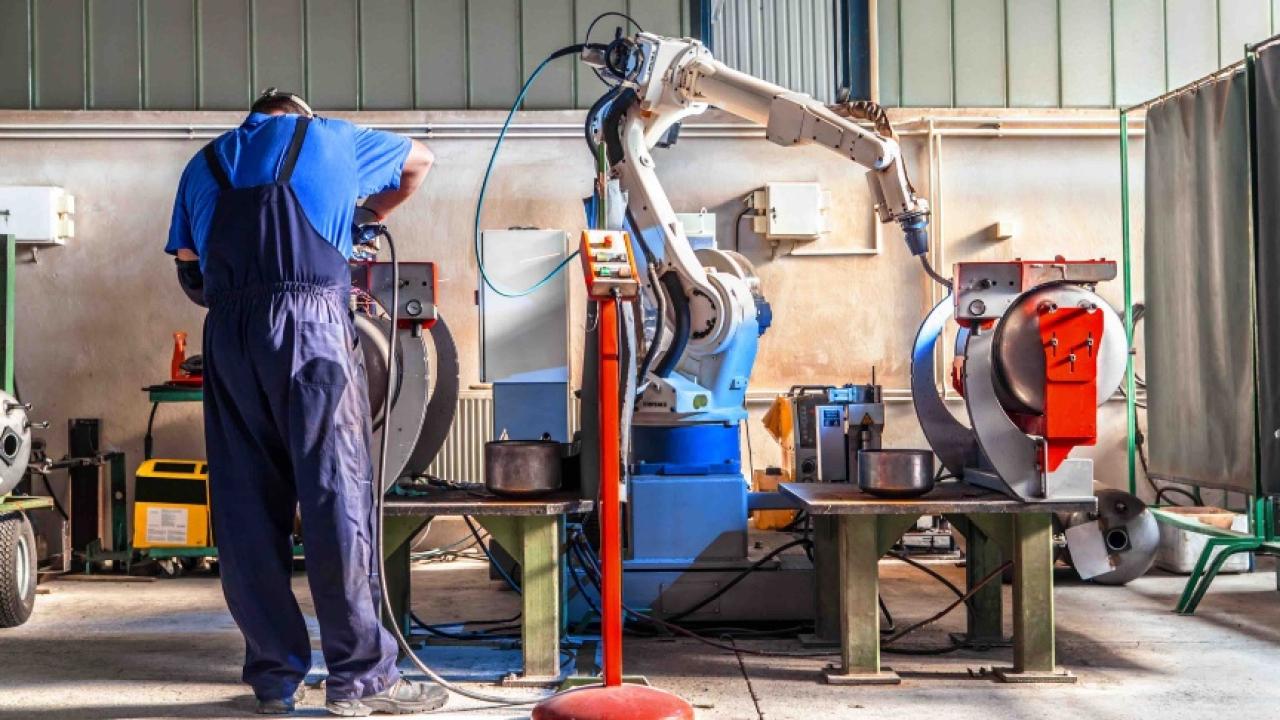
The portion of occupations that run some type of risk of being automated has remained at around 60%, for at least 15 years.
Four out of every 10 jobs in Mexico are at high risk of having their tasks automated, according to the report “The risk of automation in Mexico. Temporal and generational differences between different occupations”, published by ECLAC.
The report, which analyzes the risks that certain occupations face due to automation between 2005 and 2020, within the Mexican labor market, shows that 11.3% of occupations run a medium risk of being automated and 11.7% face a low risk. . In total, 64.4% of jobs in Mexico face some risk of being automated.
The analysis also considers the household sector, defined by Inegi as those economic units in the informal sector, plus those that perform unpaid domestic work and subsistence agriculture and that, according to ECLAC, have a practically zero risk of disappear due to automation.
Although the change in the portions of occupations that are at risk of being automated is non-existent, the change in the employed population between 2005 and 2020 means that there are 2.1 million more jobs at risk of disappearing thanks to automation.
GENERAL STABILITY, CHANGES IN SECTORS
Throughout the period analyzed in the report, that is, between 2005 and 2020, marginal changes occurred with respect to the proportion of occupations at risk of being automated.
Over 15 years, four in 10 occupations were at high risk of being automated, one in 10 at medium risk, and one in 10 at low risk.
The most important changes in this period occurred among occupations in particular. While, in 2005, the occupation most at risk of being automated was agricultural workers; In 2020, this position is filled by sales employees and telemarketers.
Seven of the occupations remain on the list of those most at risk of being automated. These include agricultural industry workers, secretaries, stenographers, typists, drivers of motorized land transportation, and workers in the preparation and service of food and beverages in establishments.
The assemblers and assemblers of tools, machinery, metal and electronic products and cashiers, collectors and payers are added to the list.
PRECARIZATION OF EMPLOYMENT
For Ana Escoto, professor at UNAM and one of the creators of the publication, the results demonstrate, first, a general precariousness in the conditions of occupations, regardless of the level of automation risk they carry.
In addition, the needs of the industry and the training of students in universities show a significant imbalance.
An example of the precariousness of conditions is that the household sector does not show a significant risk of automation, because it does not have the necessary capital to implement technological transformation processes.
In addition, the conditions of occupations that are at greatest risk of being automated increasingly resemble those of informal sector workers.
"We cannot talk about the risks of automation in Mexico without talking about this large group of people who are doing their jobs in the home sector and within a process of precariousness that affects all levels of risk," Escoto said in an interview.
According to the report, while the probability that a person with a low risk or who belongs to the household sector is part of the highest income quintile in Mexico has remained stable over time, those who face a medium or high risk of automation have seen a decrease in the probability of being part of the richest quintile.
In contrast, the probability that a person is part of the lowest income quintile ended up converging for the three risk levels and for the household sector.
In other words, it is more likely to be part of the lowest income quintile regardless of the level of automation risk than to be part of the highest income quintile if one is part of the high automation risk segment.
EDUCATION
Although it might be thought that young people are at the forefront of occupations that are not at risk of being automated, the study makes it clear that this is more of a myth, since a good part of the youth population is in the high risk of automation.
Likewise, it might be thought that people at lower risk of having their jobs automated are those who are better educated, a belief that is also somewhat challenged by the report, which suggests that education increasingly plays a role. less on the risk a person faces of their occupation being automated.
"The high-risk sector had eight average years of schooling in 2005, and in 2020, it has 9.7, almost 10 years. In other words, there has been an increase in schooling levels in those sectors as well, but today it is already that doesn't protect you as much," Escoto said.
This is largely due, according to the researcher, to the fact that many people who are part of the sectors at high risk of automation work in occupations for which they are overqualified, so their employment does not correspond to their level of training. and which represents around 29% of the employed population.
For Escoto, the results of his research, rather than encouraging a feeling of danger or threat, serve to generate public policies that consider the necessary capabilities to integrate into those sectors that run a low risk of automation; In addition, they also warn of the general level of precariousness experienced by working conditions in Mexico.









